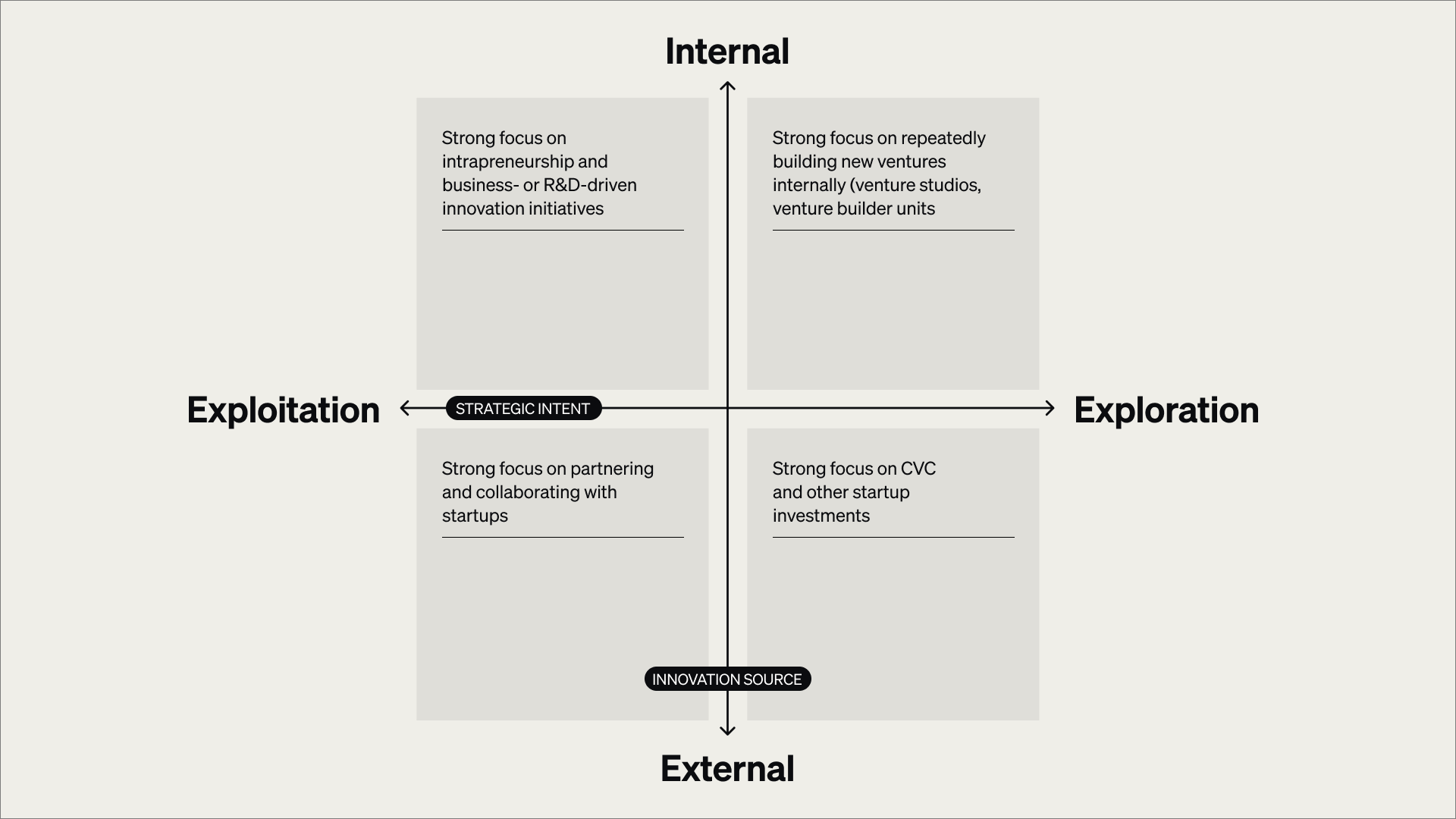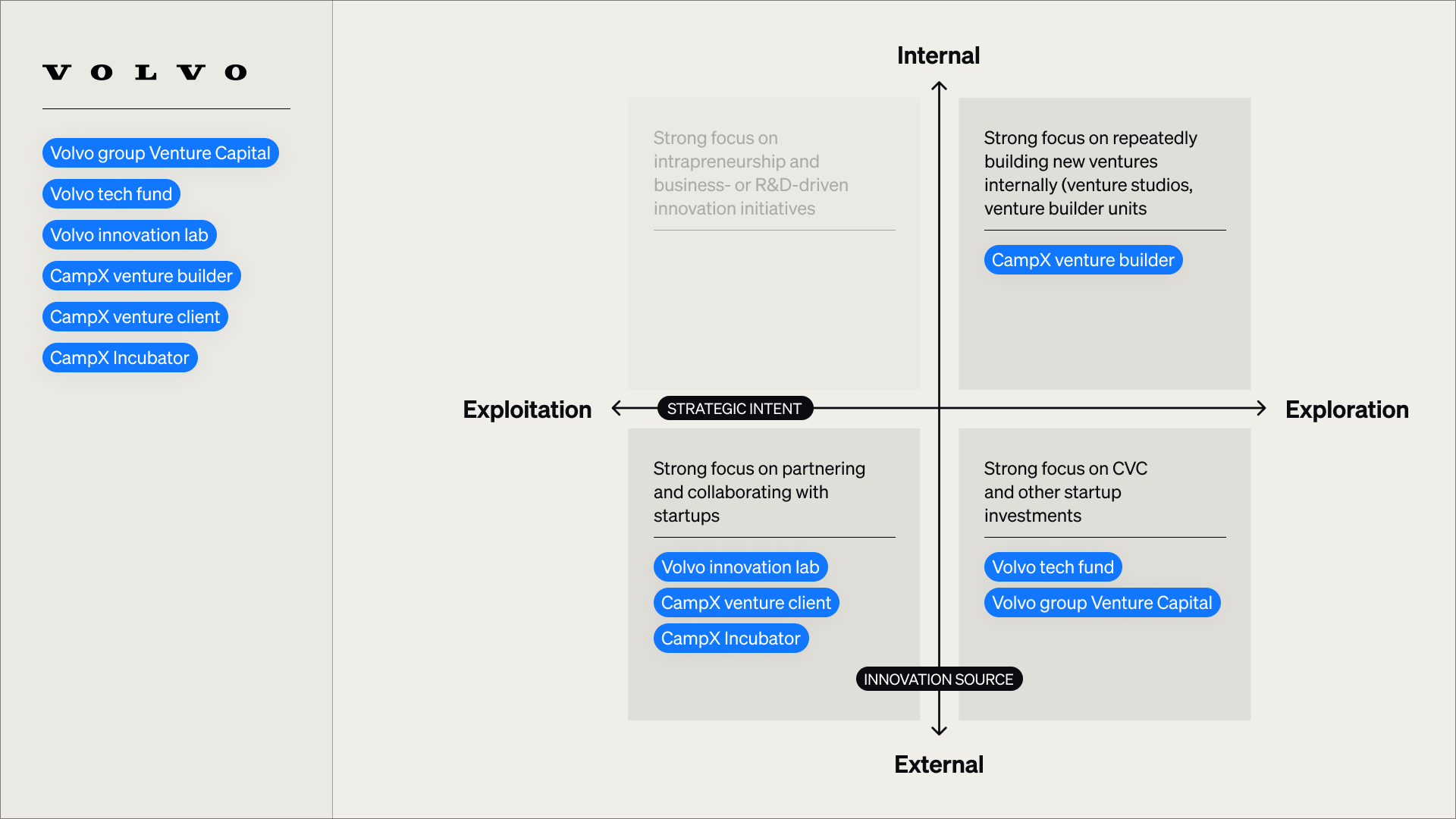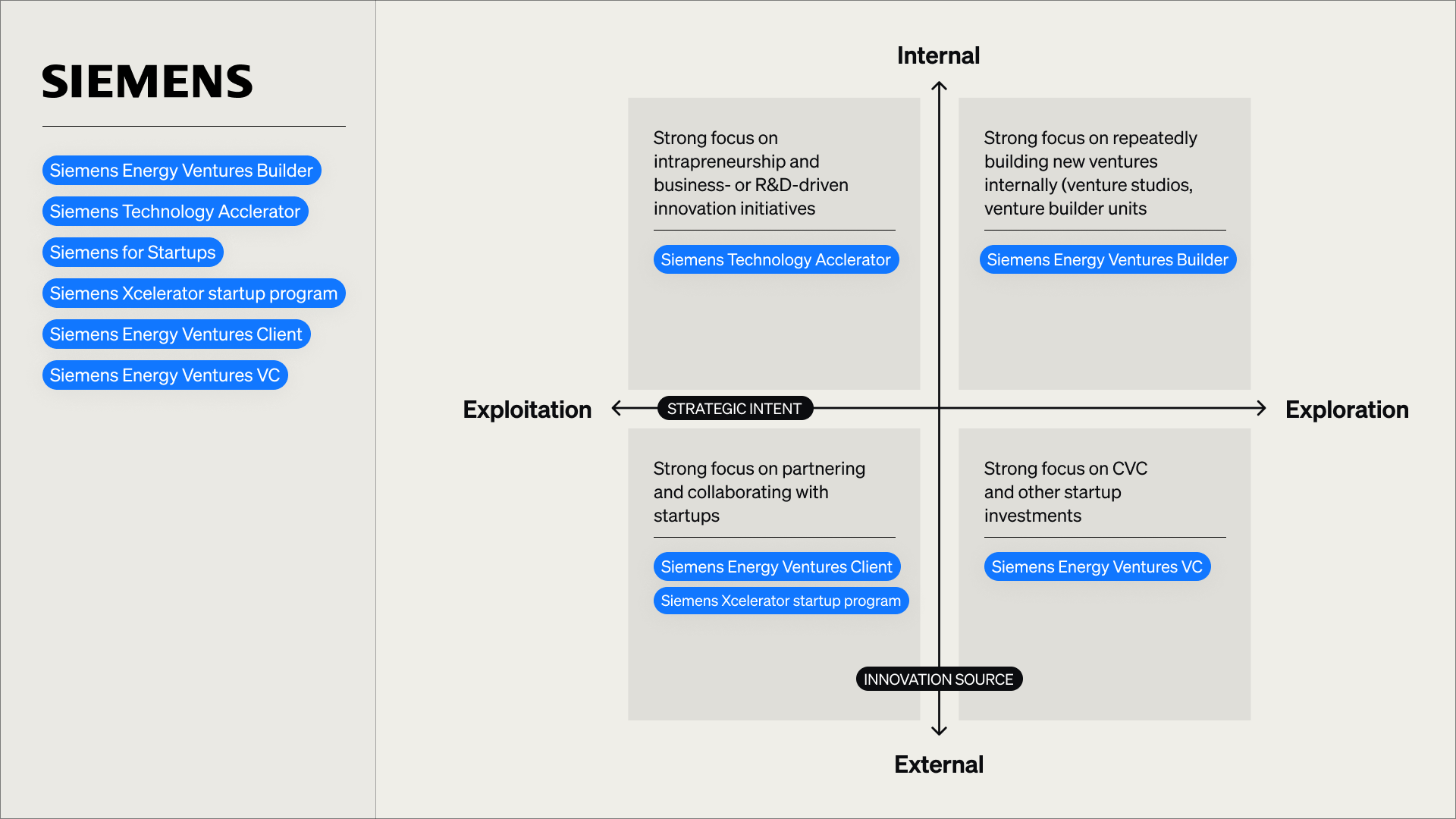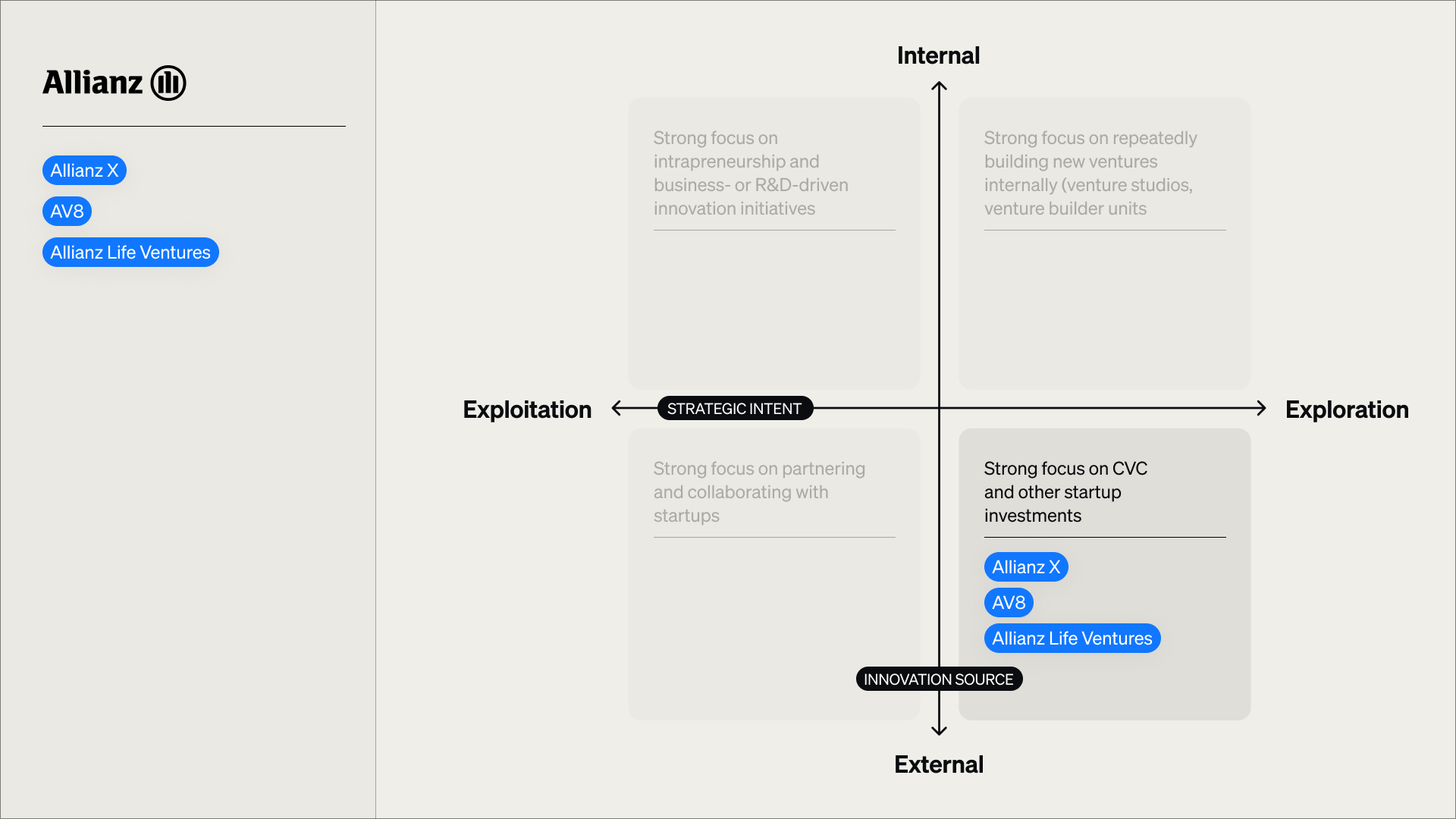


Table of Contents
- Key Takeaways
- What Is a Corporate Innovation Ecosystem
- Why It Matters
- Key Components of an Ecosystem
- How It Differs From Related Concepts
- Framework for Analysis: The Ecosystem Matrix
- How to Build Your Ecosystem
- Real-World Examples
- Recommended Tools & Resources
- Common Pitfalls
- FAQ
- Conclusion
Are your innovation labs and CVC funds running in isolation without feeding real growth back into the core business? Most corporate innovation ecosystems collapse into disconnected pilots that never scale. In this article you will learn a rigorous framework to map, diagnose and rebalance your ecosystem, backed by four real-world examples and a playbook for immediate action.
Key Takeaways:
- Map your initiatives using the Ecosystem Matrix (shown below)to reveal strategic gaps and redundancies.
- Balance exploitation and exploration across internal and external sources.
- Strengthen interactions between teams by encouraging knowledge sharing.
- Align every innovation effort with clear business objectives to maximise impact and drive growth.
Healthy corporate innovation ecosystems are built with strategic intent, bringing together programs, initiatives, and partnerships that drive revenue, strengthen the core business, and unlock new growth areas that align with your strategy. So, why do so many ecosystems fail?
- Too narrowly focused: Relying on just one vehicle, like a CVC fund
- Too siloed: Little to no collaboration or knowledge sharing
- Too little strategic intent: Initiatives don’t align with business strategy
Be sure to check out part two and part three of our series for more practical corporate innovation ecosystem insights.
What Is a Corporate Innovation Ecosystem
A corporate innovation ecosystem is the full portfolio of internal and external initiatives—R&D labs, intrapreneur programs, venture studios, corporate venture capital, accelerators and academic partnerships—that together fuel both core improvements and new-growth ventures.
- Scope: All vehicles and partnerships that source, develop and scale new ideas
- Balance: Exploitation of existing assets versus exploration of new opportunities
- Interaction: Governance, knowledge-sharing and handoffs across units
- Outcome: A cohesive engine that reduces risk and delivers measurable impact
Ignoring ecosystem balance leads to “innovation theatre”—flashy pilots that fail to influence the core or generate new revenue. A healthy ecosystem:
- Protects your core by optimising products and processes
- Drives future growth through strategic venture bets
- Reduces overall risk by balancing offensive and defensive plays
- Accelerates time to insight by institutionalising feedback loops
Why It Matters
Ignoring ecosystem balance leads to “innovation theatre”—flashy pilots that fail to influence the core or generate new revenue. A healthy ecosystem:
- Protects your core by optimising products and processes
- Drives future growth through strategic venture bets
- Reduces overall risk by balancing offensive and defensive plays
- Accelerates time to insight by institutionalising feedback loops
Key Components of an Ecosystem
- Governance & Structure
Clear roles, incentives and steering committees that connect labs, CVC funds and business units - Funding & Resource Allocation
A balanced budget across internal exploitation and external exploration vehicles - Talent & Knowledge Networks
Cross-unit teams, academic partnerships and startup collaborations that share expertise - Infrastructure & Platforms
Physical labs, digital prototyping tools and data platforms that speed experimentation - Metrics & KPIs
Vitality criteria that track strategic balance, network diversity, interaction strength and alignment
Framework for Analysis: The Ecosystem Matrix
Plot every initiative on a 2×2 grid of source (internal vs external) and intent (exploitation vs exploration).

- Internal Exploitation – R&D labs, process innovation teams
- External Exploitation – Partnerships that extend existing offerings
- Internal Exploration – Intrapreneur programs, corporate builders
- External Exploration – CVC funds, accelerators, startups
This matrix reveals over-concentration, blind spots and misalignments so you can rebalance your portfolio.
How to Build Your Ecosystem
- Map Your Initiatives
Document every lab, fund, accelerator and partnership on the matrix - Diagnose Gaps & Imbalances
Identify underfunded quadrants and misaligned units - Reallocate or Launch
Shift resources or create new vehicles to fill missing roles - Institutionalise Feedback Loops
Define governance processes and KPIs to ensure learnings flow back into both core and ventures - Monitor & Optimize
Track vitality metrics quarterly and adjust allocations as markets evolve
Real-World Examples
Volvo
- Context: Automotive leader seeking both incremental and breakthrough mobility solutions
- Approach: Mapped its Innovation Lab, Camp X venture studio, CVC and R&D units across all four quadrants
- Result: A balanced ecosystem that fuels core product improvements while incubating new mobility ventures

Siemens
- Context: Diversified industrial conglomerate with energy and health-tech ambitions
- Approach: Structured three internal ventures and two external funds to cover every quadrant
- Result: Scalable solutions in core divisions and a pipeline of climate-tech startups

Allianz (Imbalance)
- Context: Financial services giant with a standalone CVC arm
- Issue: Lacked internal labs and systematic handoffs to underwriting and product teams
- Outcome: Isolated startup bets without measurable impact on the parent business

Walmart (Isolation)
- Context: Retailer driving e-commerce efficiency through Walmart Labs
- Issue: No structured feedback into brick-and-mortar operations or supply chain
- Outcome: Incremental digital wins that failed to transform the broader retail ecosystem

Recommended Tools & Resources
Mapping & Collaboration
- Miro – Visual 2×2 ecosystem templates and real-time teamwork
- Lucidspark – Dynamic diagrams with data linking
Pipeline Management
- Monday/Notion – Custom workflows for initiative tracking
- Aha! – Roadmap tool aligning innovation projects to strategy
Knowledge Sharing
- Confluence – Centralised documentation for cross-unit learnings
- Slack/Teams – Channels and integrations for real-time alerts
Common Pitfalls
- Over-concentration in a single quadrant
- Lack of governance or shared KPIs
- No feedback loops from pilots to core
- Ignoring cultural and behavioural barriers
FAQ
Q1: How often should I revisit my ecosystem matrix?
A1: Quarterly reviews ensure you catch emerging gaps and rebalance before value stalls.
Q2: Which vitality metric signals urgent action?
A2: A drop in network diversity or interaction strength often precedes stalled pilots and lost budgets.
Conclusion
A high-impact innovation ecosystem is not a scatter of disconnected pilots but a strategically balanced engine. Use the Ecosystem Matrix to map, diagnose and rebalance your portfolio, then institutionalise governance and feedback loops to turn corporate venturing into repeatable growth.


.webp)







.svg)





